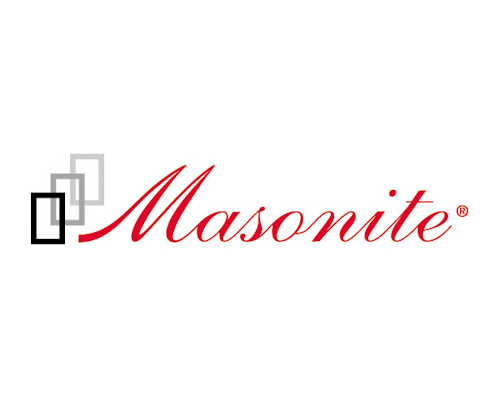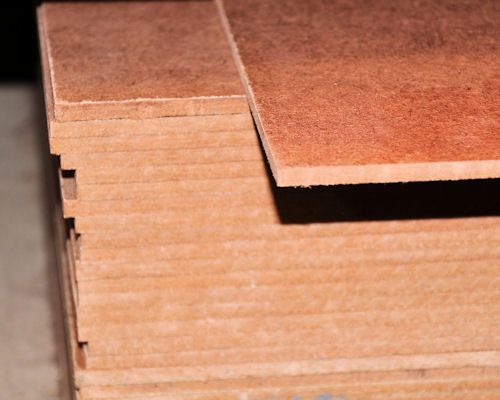Hardboard
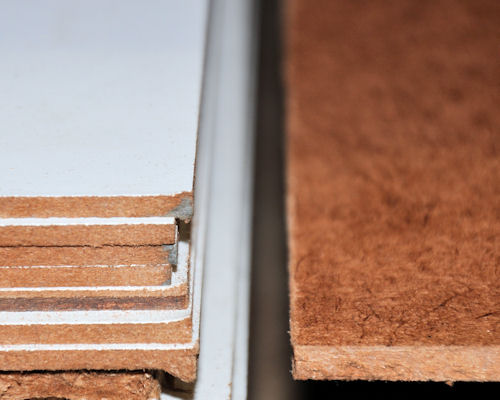 Audio for slide 1 (mp3 |6|KB)
Audio for slide 1 (mp3 |6|KB)
In principle, the bonding is achieved entirely through the 'felting' process of the fibres and the natural glue, or lignin, already present in the wood.
However, other chemicals can be added to improve the board's strength and resistance to moisture, fire, insect attack and decay.
It is also often pre-painted on one face.

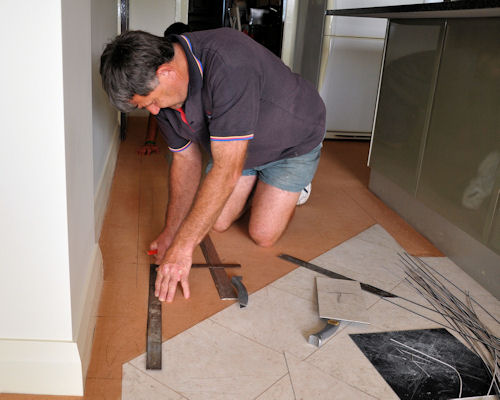 Audio for slide 3 (mp3 |6|KB)
Audio for slide 3 (mp3 |6|KB)
Types of Hardboards
Standard hardboard is used for wall linings, door skins, cabinet backs, drawer bases, and other interior purposes.
Underlay hardboard is treated to improve its moisture resistance, and is used under floor coverings.
Tempered hardboard is treated to give it more strength and better resistance to moisture, so it can be used as a lining where moisture may be present.
Exterior hardboard is treated to make it resistant to moisture and weathering, so it can be used for cladding and other outside applications.

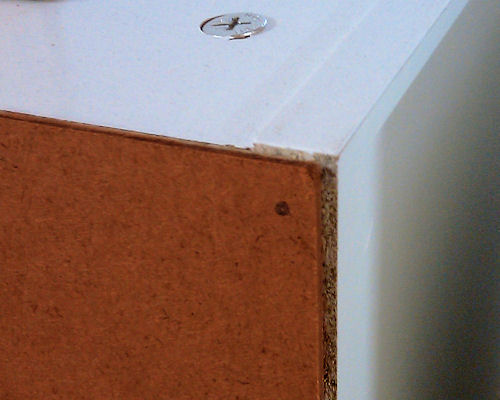 Audio for slide 4 (mp3 |6|KB)
Audio for slide 4 (mp3 |6|KB)
Advantages
Hardboard can be nailed or screwed close to the edge, and does not split, chip-out or produce splinters.
The board is also flexible and easy to bend into curved shapes.
Because of its strength and smooth surface it is ideal for cabinet backs and drawer bottoms.
It is also widely used in templates and jigs.


Learning activity
Audio 6 (mp3 |6|KB)Hardboard was once commonly used in kitchen and bathroom cabinet backs and drawer bottoms.
However, it is much less popular now and has largely been replaced by melamine-faced particleboard or MDF.
Do you use hardboard in any of your cabinets or other furniture items?
If so, where do you use it and why is it considered the best choice for that application?
Share your answers with your trainer and other learners in your group.



